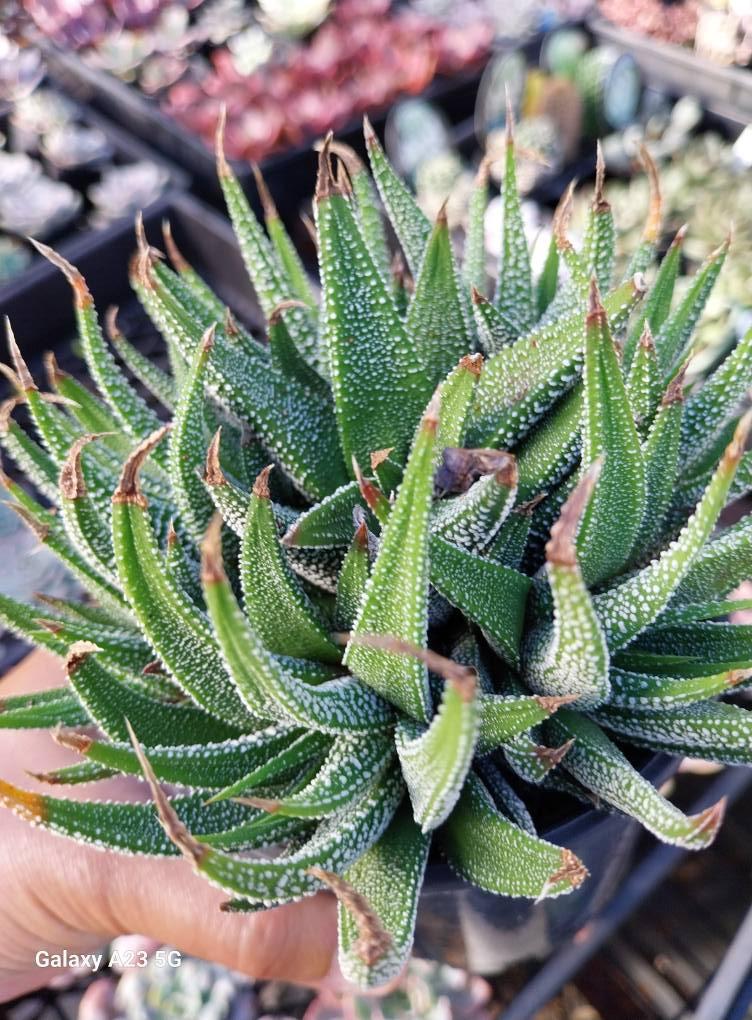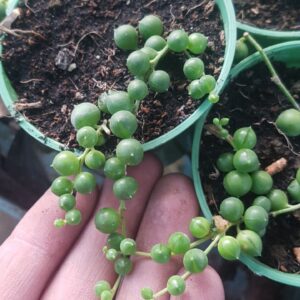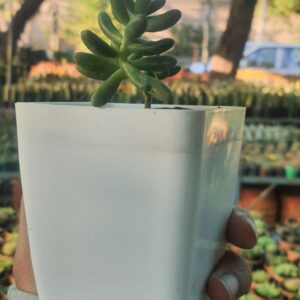🌿✨ Haworthia attenuata var. radula — The Textured Zebra Plant
Haworthia attenuata var. radula, often referred to as the Zebra Plant or Pearl Plant, is a striking succulent known for its dense, rough-textured white tubercles (bumps) covering the green leaves, creating a more rugged appearance than the common Haworthia attenuata. Native to South Africa, this species is popular in indoor gardens due to its attractive, hardy nature and low maintenance needs.
This variety is distinguished from other Haworthias by its more pronounced, wart-like texture on the leaves, giving it a distinctive architectural look.
🌿 Botanical Overview
Scientific Name: Haworthia attenuata var. radula
Common Names: Textured Zebra Plant, Pearl Plant
Family: Asphodelaceae
Origin: South Africa
Growth Habit: Compact, rosette-forming succulent
Size:
Height: 4 to 6 inches (10–15 cm)
Width: 5 to 8 inches (12–20 cm)
USDA Hardiness Zones: 9–11
🍃 Appearance
Leaves:
Fleshy, triangular, and dark green leaves arranged in a dense rosette
Covered with distinctive, rough, white raised tubercles on both sides
Leaves are pointed, sometimes with a rougher edge than other Haworthia species
Texture is coarser compared to the smoother Haworthia fasciata
Flowers:
Produces slender flower spikes (inflorescences) with small, white tubular flowers
Blooming usually occurs in spring or summer
Flowers are modest but a pleasant bonus
This plant’s sculptural appearance and textured leaves make it a beautiful ornamental choice.
☀️ Light Requirements
Indoors:
Prefers bright, indirect sunlight
Can tolerate low-light conditions, making it ideal for homes and offices
Best placed near an east or west-facing window
Outdoors:
Thrives in partial shade or filtered sunlight
Avoid direct, harsh afternoon sun, which can cause leaf burn
If grown under insufficient light, the plant may stretch or lose its compact form.
🌡️ Temperature & Humidity
Temperature:
Optimal range: 18–27°C (65–80°F)
Avoid temperatures below 5°C (41°F) — not frost-hardy
Bring indoors in colder climates during winter
Humidity:
Prefers low to moderate humidity
Well-suited to indoor environments with dry air
Ensure good airflow to prevent fungal growth
💧 Watering Routine
Growing Season (Spring to Fall):
Water when the top 1–2 inches of soil are dry
Typically every 10 to 14 days, depending on environment
Water thoroughly and allow excess water to drain completely
Winter Dormancy:
Reduce watering to about once every 3–4 weeks
Allow soil to remain mostly dry to avoid rot
🚫 Key Rule: Avoid letting water sit in the leaf rosette or around the roots, as this can cause rot.
🌱 Soil Requirements
Type:
Requires well-draining soil
Recommended mix:
50% cactus/succulent mix
25% coarse sand
25% perlite or pumice
pH: Neutral to slightly acidic (6.0–7.0)
Proper drainage is crucial for maintaining healthy roots and preventing moisture-related diseases.
🌾 Fertilizing
During Growing Season:
Feed once a month with a diluted balanced succulent fertilizer
Use low-nitrogen formulas like 5-10-10 NPK
Winter:
Do not fertilize, as the plant enters dormancy
Over-fertilizing can weaken the plant and lead to soft, leggy growth.
✂️ Maintenance and Pruning
Pruning:
Remove dried or damaged leaves with clean scissors
Clear debris from the base to prevent pests
Pests:
Occasionally susceptible to:
Mealybugs
Spider mites
Scale insects
Treat with neem oil or insecticidal soap
🌿 Propagation
Offsets (Pups):
The most common method
Gently remove pups that grow at the plant’s base once they are at least 1/3 the size of the mother plant
Allow offsets to callous for a day before planting in dry, well-draining soil
Leaf Cuttings:
Less reliable but possible
Let leaf cuttings callous before planting
Seeds:
Possible but very slow and uncommon for casual gardeners
🛡️ Common Issues
Overwatering: Root rot is the biggest risk
Sunburn: Leaves turn pale, yellow, or scorched in too much direct sun
Etiolation: Stretching occurs if the plant doesn’t get enough light
Pests: Dusty, poorly ventilated spaces can attract insects
🎍 Decorative & Practical Uses
Perfect for:
Succulent arrangements
Rock gardens
Indoor pots on desks and shelves
Terrariums with ventilation
Its compact, rough-textured form makes it a standout in minimalist and modern decor.
✅ Conclusion
Haworthia attenuata var. radula is a robust, easy-care succulent with eye-catching textures that require minimal attention. It thrives on neglect, low water, and partial shade, making it perfect for beginners or busy plant owners. With the right care, it will reward you with dense clusters of textured rosettes and longevity in your indoor or shaded outdoor garden.





Reviews
There are no reviews yet.